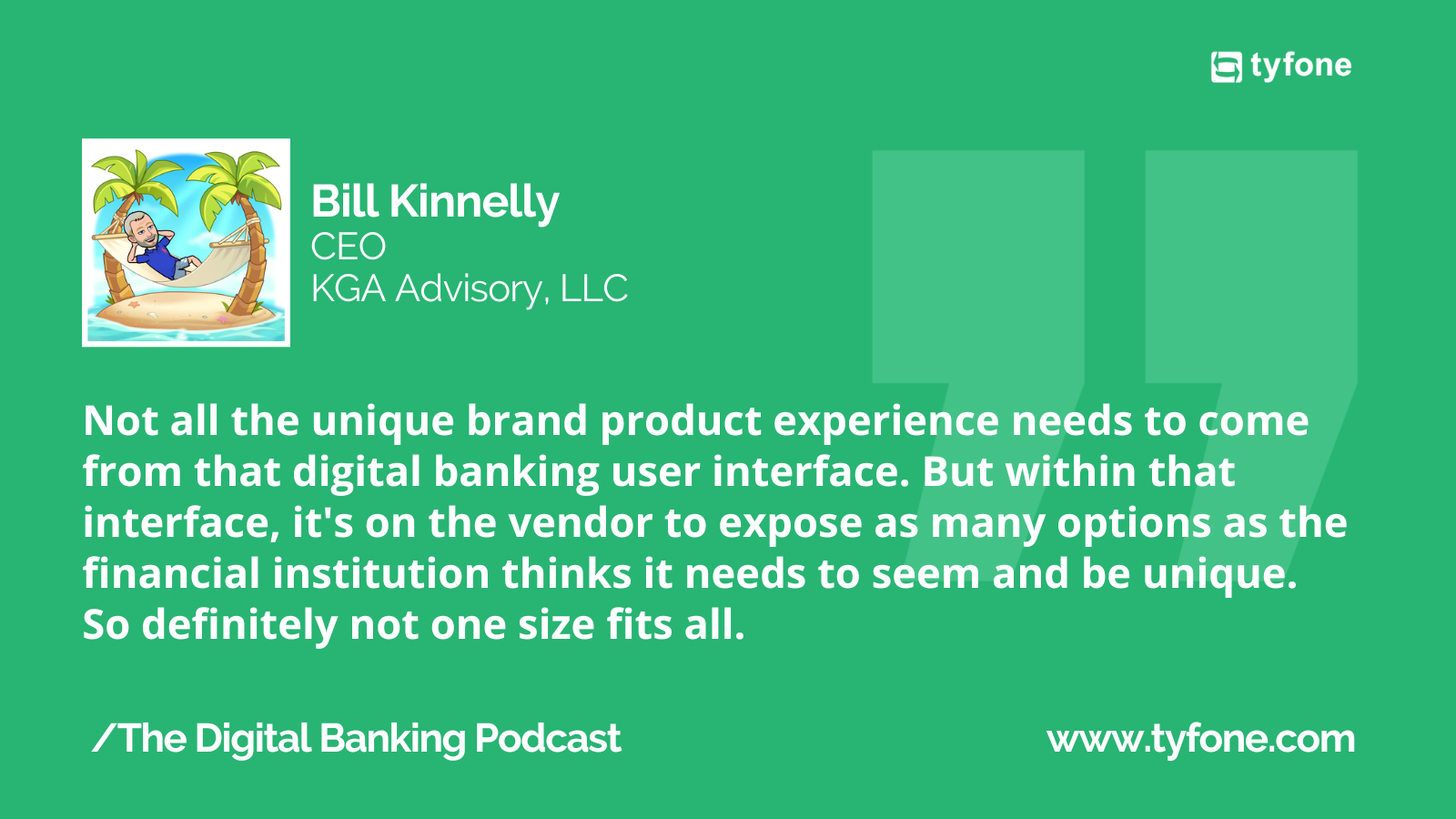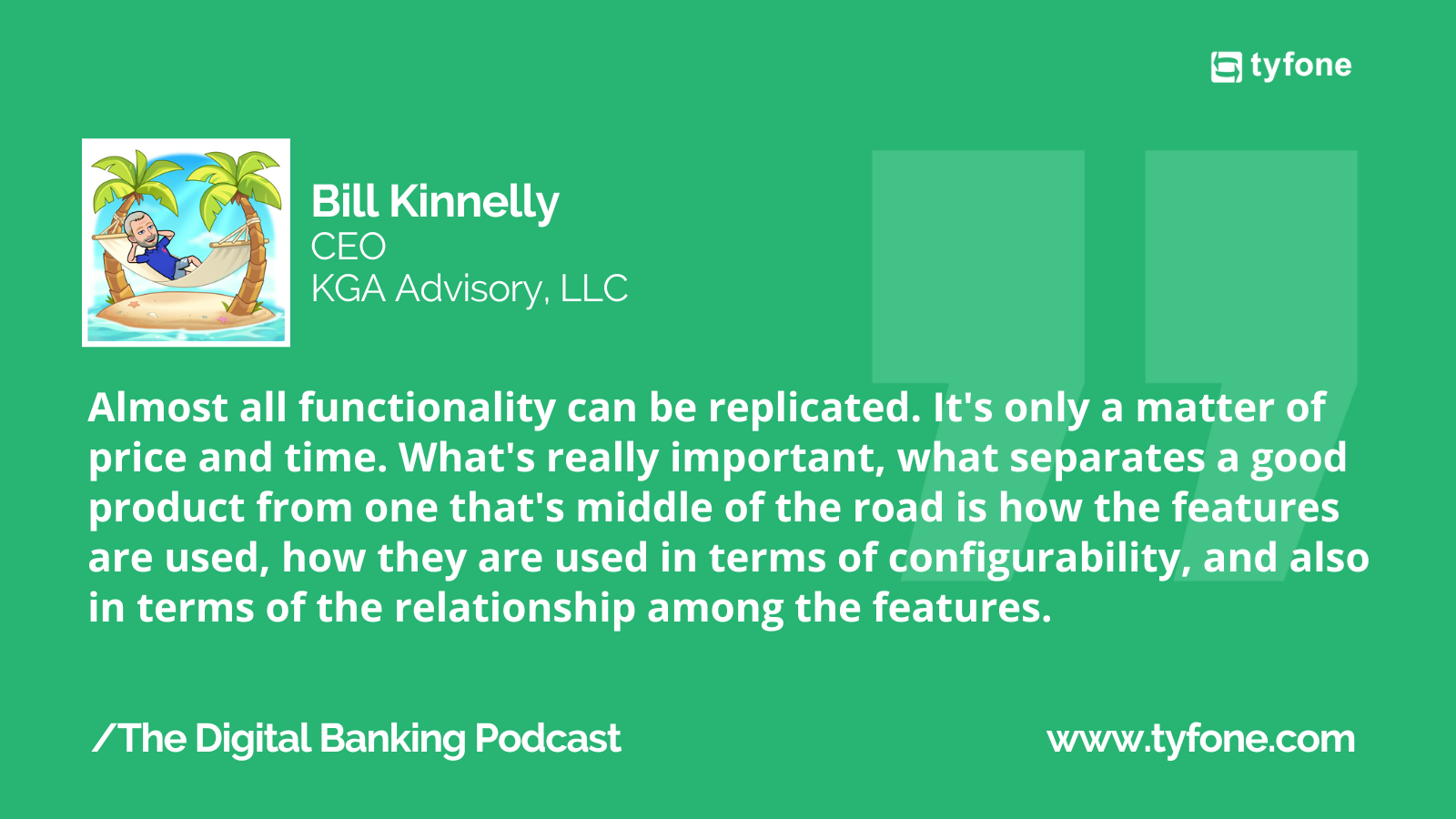Using Customization to Cater to Your Customers’ Needs With Bill Kinnelly
- Accountholder expectations continue to evolve, and it’s up to FIs to keep up.
- If a vendor wants to compete in a saturated financial landscape, they need to consider leveraging product configuration to cater to their customers’ needs.
- If you decide to run custom software, you may end up on a “customization island.”
Driven by technological innovation, consumer expectations continue to evolve and so must FIs’ ability and willingness to meet those expectations. What makes the situation different today is that expectations for your FI are set, at least in part, by non-FI organizations. Today’s consumers expect hyper personalization in everything they do.
How does an FI ensure that every software solution it deploys meets its very specific needs? Certainly highly configurable products offer a great degree of flexibility. However, the technologically savvy must consider the benefits (and perils) of customization.
In this episode of Digital Banking Podcast, host Josh DeTar talked to Bill Kinnelly, the CEO of KGA Advisory, LLC, about configuration strategies, the pitfalls of being on what Kinnelly calls a customization island, and the potential problems with development and keeping up with innovation in custom solutions. If you want to learn more, continue reading or tune into the latest episode.

Customization is not the same as configuration
People often confuse customization and configurations, but they are not the same and it’s important to understand the difference “Customization means you’ve developed some things specific to a client, and it needs to be maintained for the entire lifetime of your relationship with the client,” said Kinnelly. “Usually, we think about customization in terms of software, but it could be lots of other things that you’ve customized, like how you operate the solution or how you architect the technology. So if you do something for one client that isn’t generally applicable to a market, then that’s what we consider customization.”
Configuration, on the other hand, is parameters, data values, and options that come in the standard product that each FI can set, exclusive of any technology specific to a single buyer.”
Understand the market you’re calling on
Too much configurability in a software product can be almost as problematic as not enough configurability because FIs can become confused with too many options. “Having the right configuration is a strategy,” warned Kinnelly. “Deciding what options to make available to buyers needs a whole lot of thought because if there are too few options, you’ve got three colors of the same-sized box that may not provide enough flexibility for your buyers. If you have too many options — even if they’re not customization, if they’re just configuration — you overwhelm the buyer.”

How to select the right vendor based on configurability
When choosing a vendor, your FI needs to start by defining its own needs and then understanding the potential vendor’s approach to configuration. “If you go to three vendors and you become convinced [by all of them] — if those are your three big configuration requirements and you think all three vendors can do it, then maybe there are subtleties in how they do it,” claimed Kinnelly. “You should ask, ‘How do you meet my requirements?’ The rest of the configuration strategy for the vendor — besides how many — has to be things like which things are changeable by the customer versus the vendor, and are they changed upfront during onboarding or after they go live?”
Running custom software means being on a customization island
According to Kinnelly, you have to be prepared to be on a configuration island if you intend to run customized software for your financial institution. “The development of the customization is the beginning of the issue, but not just on the initial go-live or the initial deployment, you’re going to be as a buyer, in your own” explained Kinnelly. “That vendor’s not creating something for the market; they’re creating something for you. But then after you’re live, there are the issues related to the maintenance of what has been developed.”
Do you know what your accountholders need?
Understanding your accountholders’ needs is the basis of success. That understanding empowers you to provide the right solutions to their problem and obtain software that suits their needs. “In order to know whether or not I need one or five payment methods or funding methods for payment, I need to know whether my customers or my members care about those five things,” said Kinnelly. “The FI needs to be very grounded in its service to its customers, and then buying from a vendor becomes a lot easier. If the FI is not grounded in what its customers need, then they start leaning on the vendors for suggestions, and the vendors often don’t know.”

